This post may contain affiliate links for which I earn a small commission at no extra cost to you. For more info, check out my Disclosure Policy. Thank you for your support!
If you have coeliac disease, you’re probably used to seeing the phrase ‘may contain traces of gluten’.
But how seriously should you take these warnings if you have coeliac disease?
Learning to read food labels and ingredients lists can be tough enough when you first embark on a gluten free diet.
Luckily in the UK any of the 14 major allergens have to be highlighted in bold in the ingredients list of packaged foods.
This includes cereals containing gluten, which can often make it a lot quicker and easier to work out if a product is safe with a quick scan of the ingredients.
But if you have coeliac disease, there is then the one thing that can make any ‘safe’ ingredients list suddenly inaccessible.
That, my friends, is a ‘may contain’ warning.
And the big question is – should people with coeliac disease avoid products with ‘may contain’ warnings?
I wanted to delve a little deeper into what exactly these are – and importantly how they can be improved – for people with coeliac disease.
But first let’s look at what it takes to label something as ‘gluten free’.
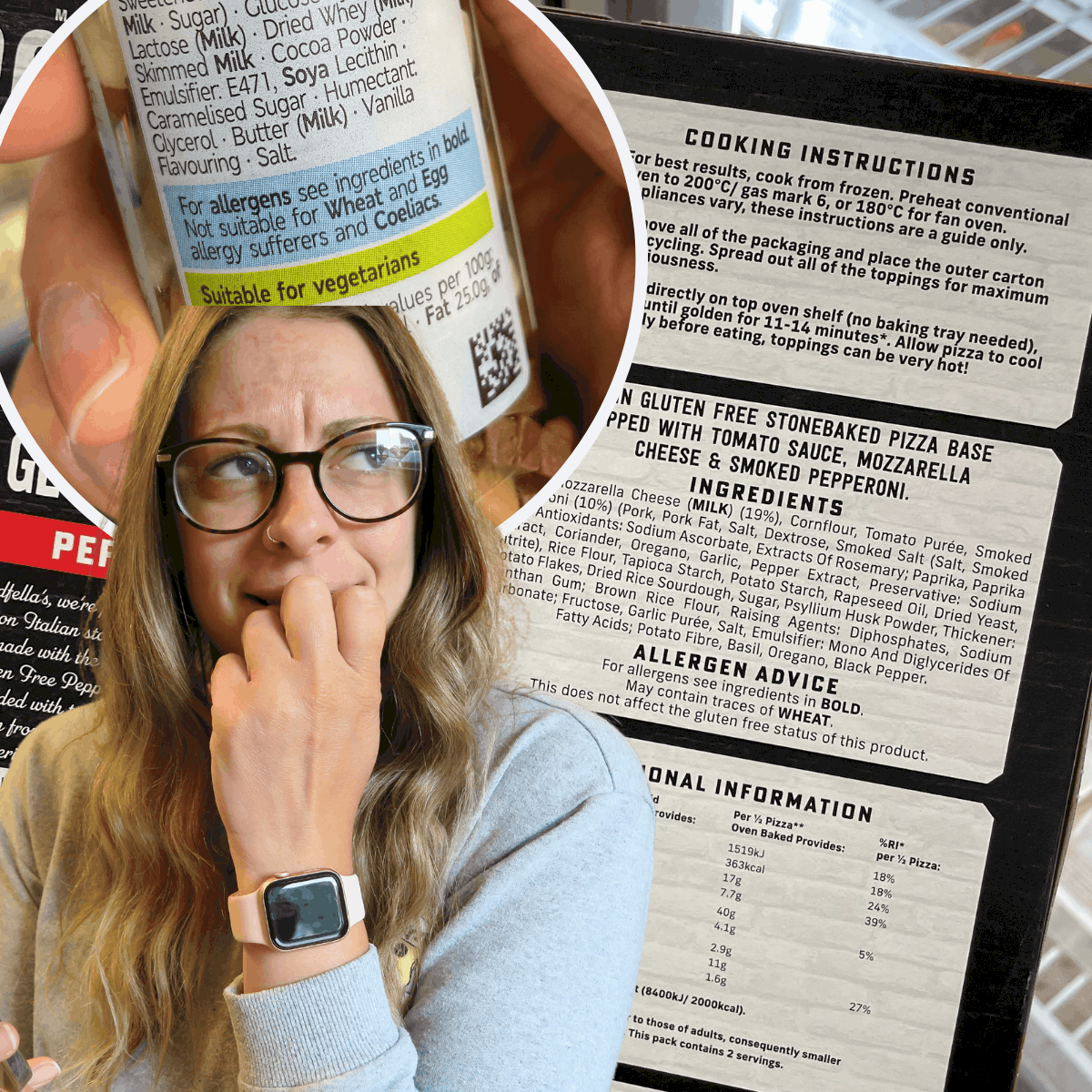
Table of Contents
- Gluten free labelling in the UK
- So what is a ‘may contain’ warning?
- When are ‘may contains’ used?
- A note on ‘may contain wheat’
- Increased apathy towards warnings?
- So what can be done to improve may contain warnings?
- Should people with coeliac disease avoid ‘may contains’?
- Should you (literally) risk it for a biscuit?
Gluten free labelling in the UK
For something to be labelled as ‘gluten free’ in the UK, the product must test at 20 parts per million (PPM) or less of gluten.
This is covered by law and applicable for products – the world of gluten free menus and catering is a whole other story!
This means, in theory, you can easily tell if something is gluten free if you pick it up and it says ‘gluten free’ on the label.
And because of this law, any product which is legally marked ‘gluten free’ shouldn’t have any ‘may contain’ warnings for gluten on it.
Even if there is an allergen such as barley highlighted on the ingredients list of a gluten free product, the levels of gluten should be low enough (below 20ppm) it is considered coeliac-safe.
And likewise, if there are any ‘may contain’ warnings on a Free From product (which Coeliac UK and FSA advises there shouldn’t be) then the product should still test below 20ppm.
Non-Free From products
However, aside from this, currently there is no law or threshold levels for all allergens in general that determine when exactly this labelling must be used for non-free-from products.
That is to say, products which don’t contain gluten but aren’t specifically labelled ‘gluten free’ or ‘free from’, so don’t undergo testing for levels of gluten.
It’s down to the manufacturer’s discretion following a risk assessment.
This means that ‘may contain’ could mean something has been rubbing shoulders with a piece of bread, or it may be highly unlikely (but not impossible) it’s ever touched gluten.
And it is exactly this ‘one size fits all’ approach which makes these labels so confusing.
It’s also why we get confusing labelling like this (pictured below) – because technically a product labelled as gluten free shouldn’t have a ‘may contain’, right?
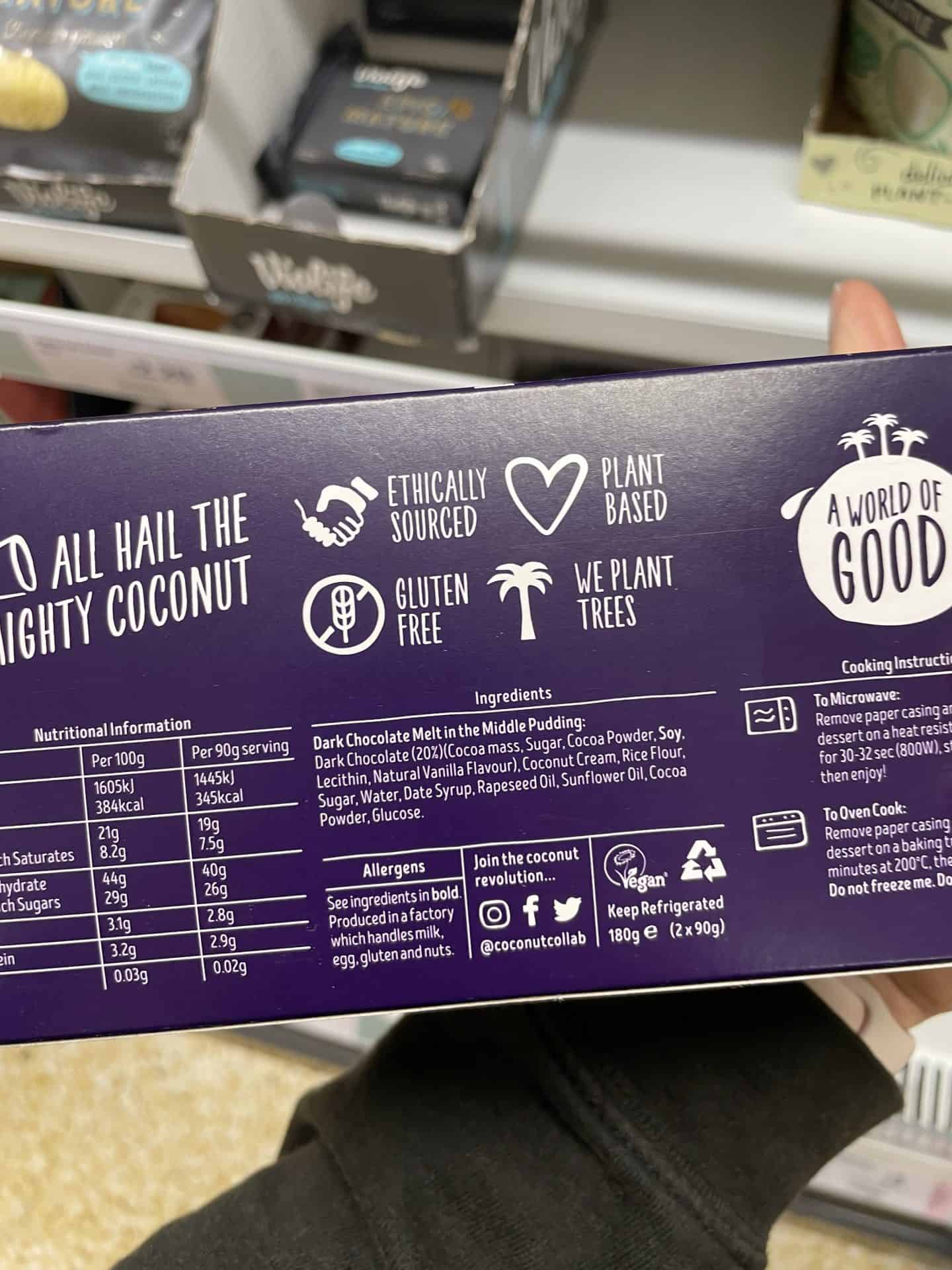
So what is a ‘may contain’ warning?
There are several types of labels you need to watch out for when it comes to ‘may contains’.
These warnings cover the top 14 allergens and sometimes you’ll find there may be a whole list of contaminants which may be present.
Examples of ‘may contain’ warnings include:
- May contain traces of wheat / barley / cereals containing gluten
- May contain traces of cereals containing gluten
- Made in a factory which also handles cereals/barley/wheat/gluten
- Produced on a line which handles cereals/barley/wheat/gluten
- Not suitable for people with coeliac disease / an allergy to gluten
… you get the gist!?
Any such warning is usually found in a disclaimer underneath the ingredients list of a food product.
They are used on prepacked foods and non-prepacked foods, such as bakery/butchers/deli items.
For example, pick up any packet of Walker’s crisps and you’ll see exactly what I mean, no matter which flavour, shape or pack size you choose.
This means that a product which should be gluten free from its ingredients alone, can actually have a risk of cross contamination.
Generally this comes from either the manufacturing process or the production of the ingredients used to make up that specific product.
As a side note, from October 2021 Natasha’s Law will mean all food pre-packed for direct sale (such as sandwiches in coffee shops) will also have to carry a full ingredients list, including allergen information, on the packaging.
This is a huge step in making it easier to eat out and grab food on-the-go.
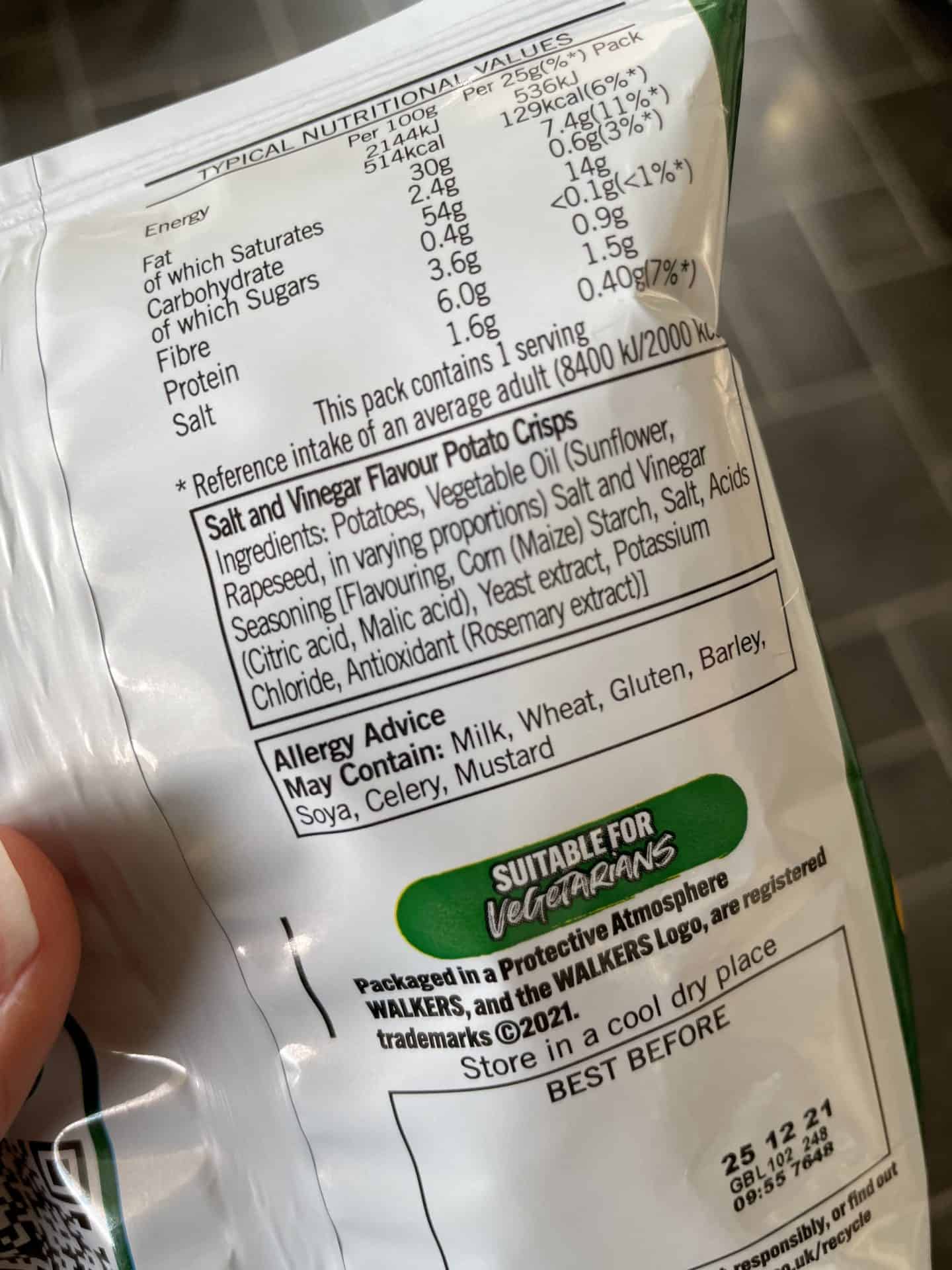
When are ‘may contains’ used?
I don’t know about anyone else, but I’ve certainly noticed a lot of these ‘may contain’ warnings used on products in blanket statements.
They seem to have gone from ‘may contain wheat’ to ‘someone might have looked at a piece of bread before coming into this gluten free facility so we can’t make any guarantees’.
While it’s fantastic that more allergy awareness is coming into the spotlight, it seems to me misguided that this has resulted in the overuse of very vague ‘may contain’ statements.
It just smacks of companies covering their own backs without doing any of the research needed or taking any responsibility.
Are they just slapping a standard ‘may contain’ label on – just to be safe – when actually the risk of cross contamination is inherently low?
Are they doing it because they simply cannot be bothered to carry out good practice in cleaning down lines?
Are they just being lazy?
The Food Standards Agency guidance says cross contamination risks can be managed with effective staff training, design of production facilities, safe storage of ingredients, good practice in cleaning down lines and appropriate packaging.
But let’s face it, it’s far easier to just say ‘oh we can’t guarantee this is gluten free’ than to carry out the work (and expense) of making something gluten free.
Plus to achieve actual gluten free accreditation from Coeliac UK, there’s the extra cost of audits which some companies cannot afford – or don’t want to pay.
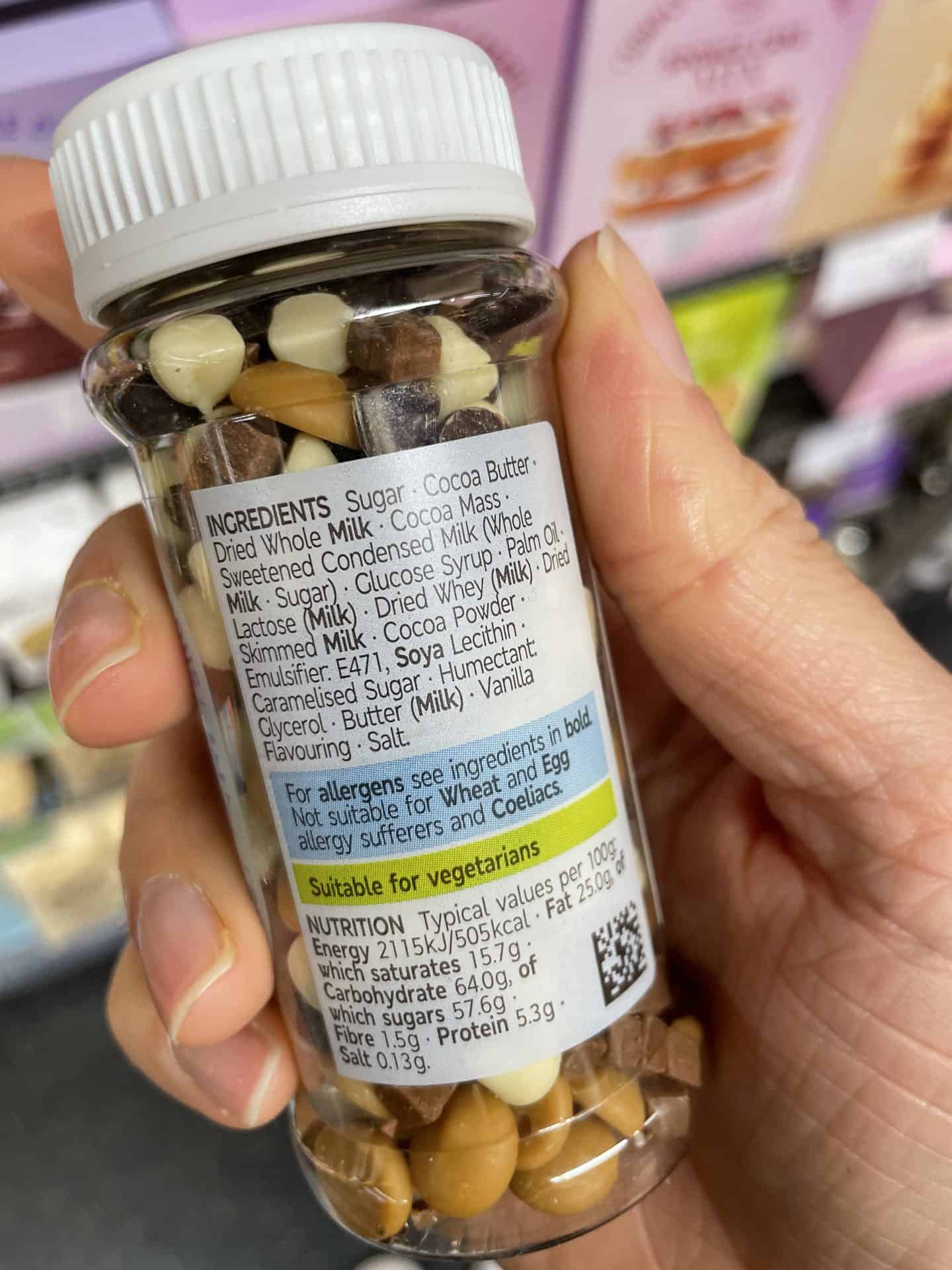
A note on ‘may contain wheat’
It’s important to add a small caveat for this rule that applies to some products which have a ‘may contain wheat’ warning.
Because wheat is an allergen, it has to be listed in bold.
However, some gluten free products contain gluten free wheat starch, which is actually below 20ppm of gluten and therefore certified gluten free.
This means it’s suitable for someone with coeliac / a gluten intolerance, but not for someone with a wheat allergy.
This is also true if there may be traces of wheat from the production line, but the product is still testing at under 20ppm of gluten.
For example, with Goodfellas gluten free pizza, there is a ‘may contain traces of wheat’ warning on their gluten free pizza.
But they also state this doesn’t affect the gluten free status. Technically this means it would be testing under 20ppm of gluten and therefore safe for people with coeliac disease.
It definitely be confusing but the general rule would be if the product is labelled as gluten free, it’s safe to assume it is ok to consume if you have coeliac disease.
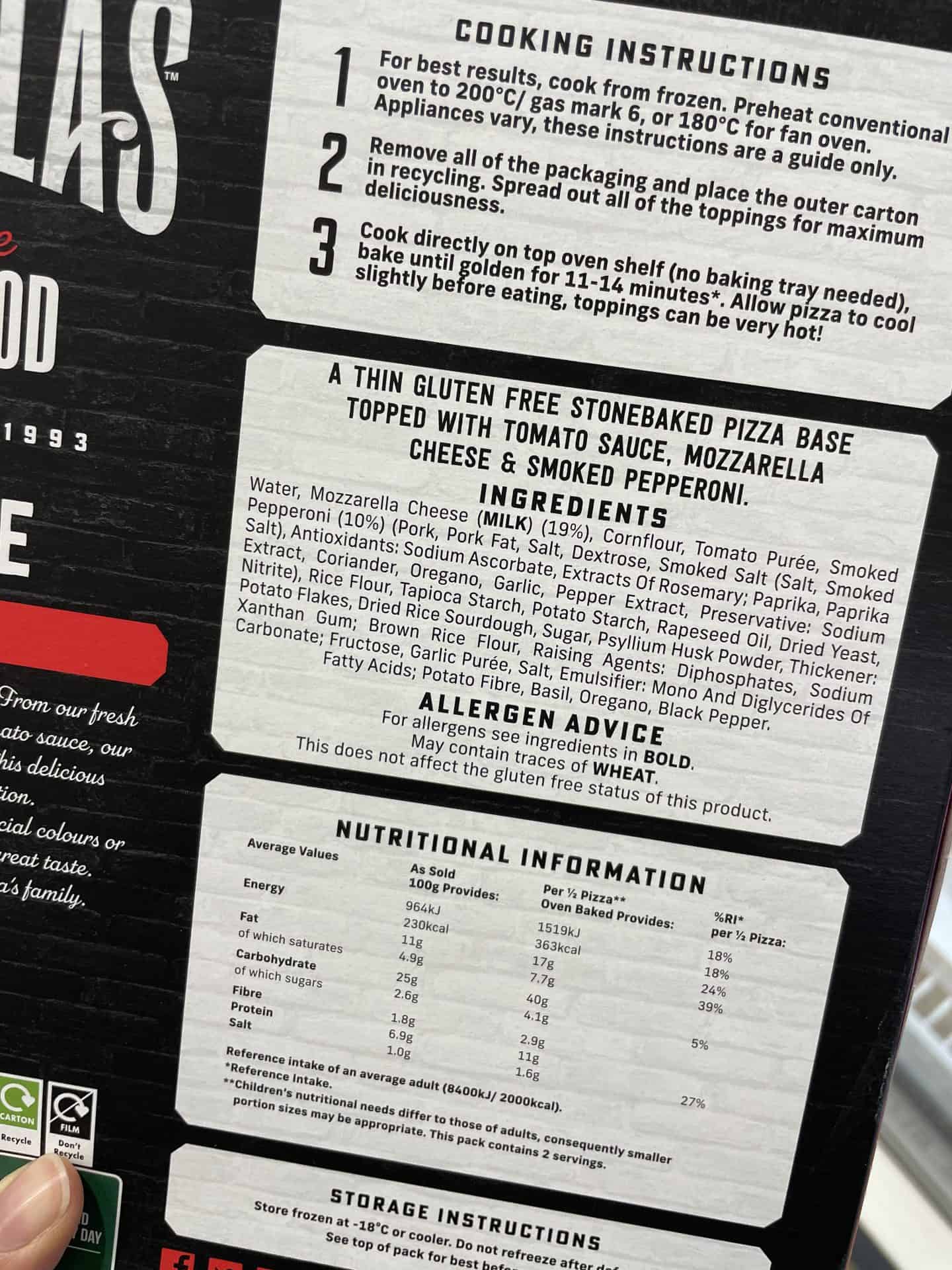
Increased apathy towards warnings?
In 2015, the Institute of Food Safety Integration and Protection (TiFSiP) and the Chartered Institute of Environmental Health (CIEH) published a white paper titled ‘Improving the Use of May Contain Allergen Statements‘.
The whole paper makes for an interesting read but in summary it contains guidance on when these statements should be used.
And, spoiler alert, even the experts says they are used way too often.
Personally I’d also argue that even though this paper is six years old, the excessive labelling of products for ‘may contains’ has actually got worse.
The problem is that it’s creating apathy, which is causing people to just think ‘f*ck it’ and eat it anyway.
And if there is gluten present, this can lead to people becoming unwell, which of course in coeliac disease could only be from the tiniest fleck of gluten and can do a lot of damage.
In fact, this study in 2011 found that consumers with food allergies considered precautionary warnings to be overused with many ignoring them.
This leads to these warnings being mistrusted, which among vulnerable allergy patients and people with coeliac disease is quite frankly worrying.
The TiFSiP/CIEH paper states that even ‘well-informed’ food businesses struggle with providing ‘accurate and reliable’ information about potential cross contamination.
So what can be done to improve may contain warnings?
For starters, having so many different ways to identify potential cross contamination is ridiculous.
Especially when some sound more serious than others, yet they all mean the same thing.
Even the TiFSiP/CIEH paper paper states that improving the consistency of these warnings can help to make them more reliable.
In Australia and New Zealand, the food manufacturing sector uses a VITAL (Voluntary Incidental Trace Allergy Labelling) system to determine if ‘may contains’ are needed.
This standardised process provides reference doses to help manufacturers determine if products are safe and need any ‘may contain’ labelling.
If traces of an allergen are found in a product that are below the reference dose, allergen labelling is not needed – and above the reference dose means labelling is required.
In my opinion this is a far more effective system and something I’d love to see introduced here in the UK at some stage.
Having a threshold level which determines if a ‘may contain’ warning is needed would certainly make life a lot easier – though it feels like a pipe dream right now.
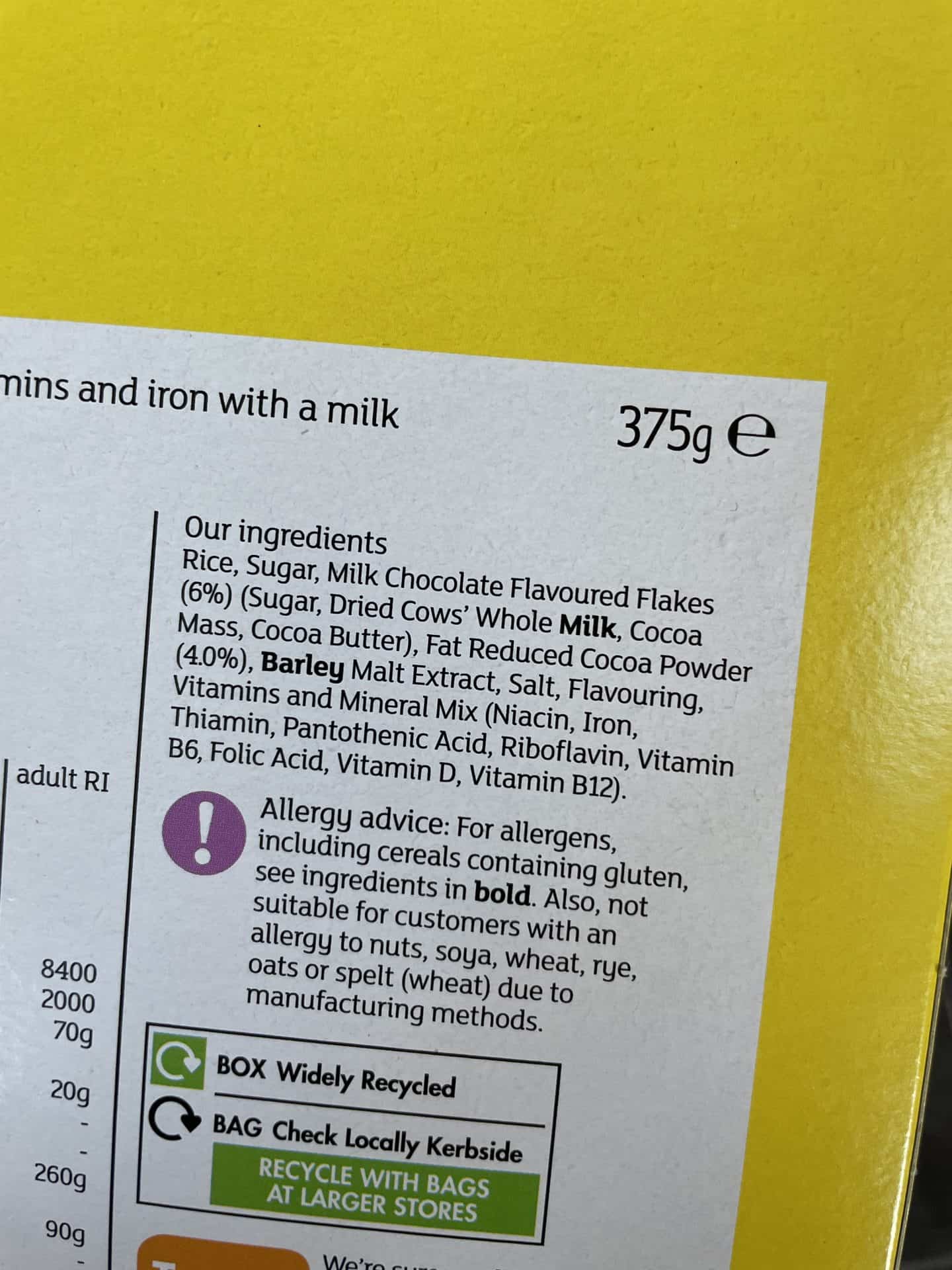
Should people with coeliac disease avoid ‘may contains’?
‘May contain’ warnings have always seemed to be a bone of contention for some people.
As far as I am aware, in my 20 years with coeliac disease the advice has always been to avoid products with a may contain warning.
Coeliac UK’s guidance for people with coeliac disease is to avoid these products unless the manufacturer has specified they are safe for people avoiding gluten.
The charity does put pressure on food manufacturers and any safe products will be listed in its Food Checker App.
This is a really quick and easy way to be able to confirm if something is gluten free and if you haven’t already downloaded it, I’d highly recommend you do.
When I have spoken to coeliac specialist dieticians before, their guidance has also been to avoid these ‘may contain’ products.
So to me, it therefore seems crystal clear that they should be avoided unless you can confirm from the manufacturer (or Coeliac UK) that they are safe.
However I have spoken to people with coeliac disease who do eat them, and have never had any issues raised in their annual coeliac check-ups.
While I do think it’s down to personal preference, it’s important to understand the decision-making behind these statements before making a choice.
Should you (literally) risk it for a biscuit?
For me (although I did have a bit of a rebellious stage in my teenage years) I haven’t knowingly touched anything with a ‘may contain’ warning for many years.
Without being able to know the exact risk for each individual product, how could I possibly know something is safe?
For example, one product may have a ‘may contain’ warning and not have been near a single crumb of gluten.
Another might have been in contact with gluten but have exactly the same warning label.
Without contacting all the manufacturers about each individual batch, I’d never know. And let’s face it, I simply don’t have the time to do that.
So yes, while some people do choose to ‘risk it’, I personally would not and I also wouldn’t advocate it either.
Let’s just hope that work can one day be done on this to make allergy labelling clearer and see ‘may contains’ only used when absolutely necessary.
Do you eat products which have a ‘may contain’ label on? And do you think ‘may contain’ allergen labelling should be better regulated?
I’d love to hear your thoughts in the comments below!
Sources / Further Reading:
Coeliac UK Food Checker App – https://www.coeliac.org.uk/information-and-support/your-gluten-free-hub/food-and-drink-information/gluten-free-food-checker-app/
Food Standards Agency – ‘Allergy Labelling for Food Manufacturers’: https://www.food.gov.uk/business-guidance/allergen-labelling-for-food-manufacturers
CIEH/TiFSiP white paper – ‘Improving the use of ‘may contain’ allergen statements’: https://www.cieh.org/media/1234/lmproving-the-use-of-may-contain-allergen-statements.pdf
Eurofins – ‘Labelling of Allergen Traces: The VITAL Concept’: https://www.eurofins.de/food-analysis/food-news/food-testing-news/allergen-traces-vital-concept/
BMC Public Health – ‘Using ‘may contain’ labelling to inform food choice: a qualitative study of nut allergic consumers’: https://bmcpublichealth.biomedcentral.com/track/pdf/10.1186/1471-2458-11-734.pdf

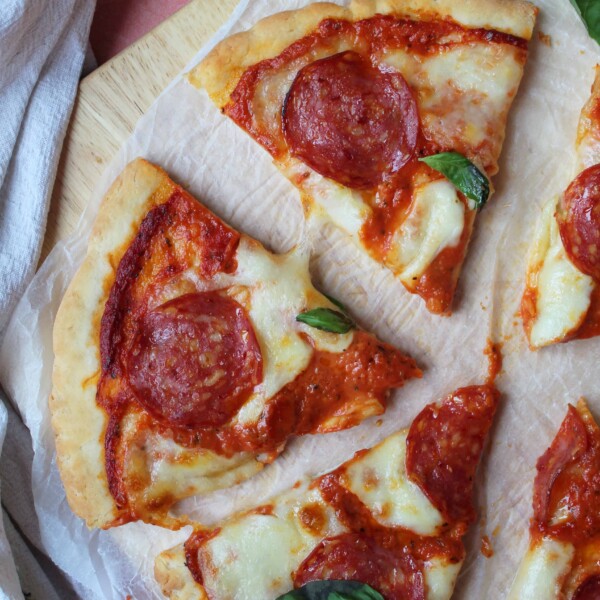
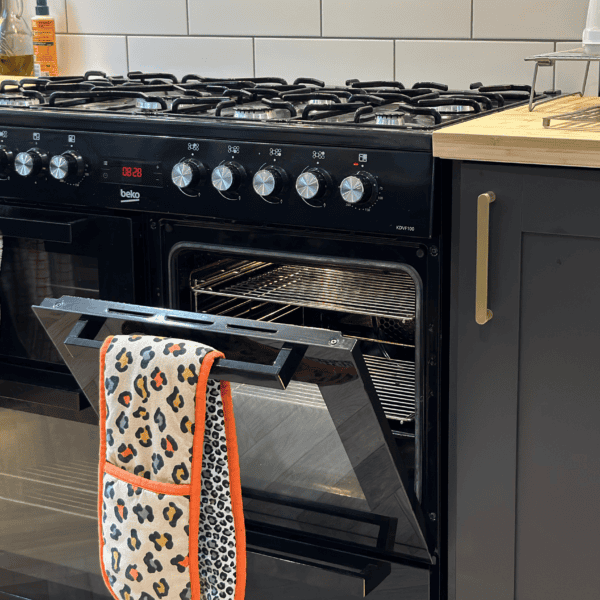
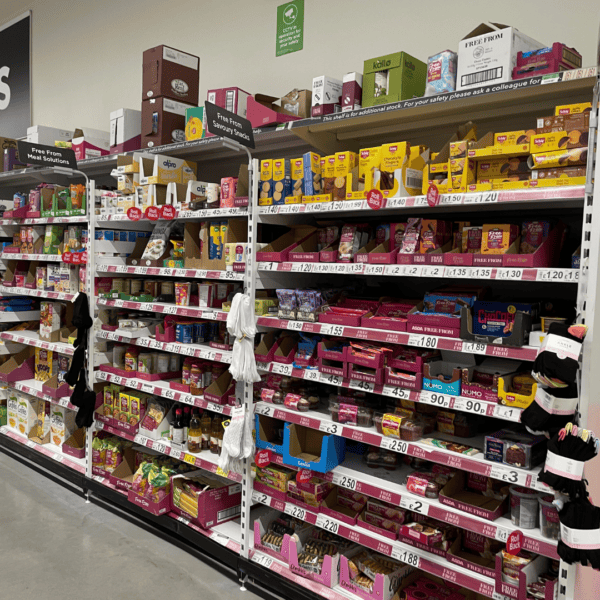


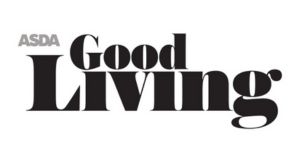
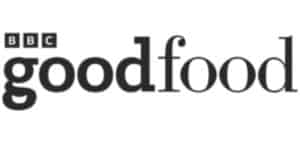
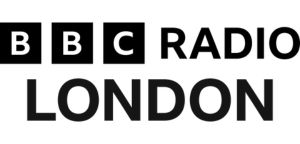




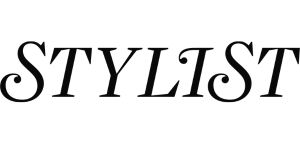
Hi Sarah I was diagnosed with CD on the 15th December 1987 – a date I will never ever forget due to how ill I was and it was a relief to be told it was CD and nothing more sinister. I must admit I do treat myself occasionally to a bag of Walkers plain crisps – I know I shouldn’t due to ‘the May contain’ warning but nothing else hits the spot for me where crisps are concerned!
Thank you for all your lovely recipes and advice.